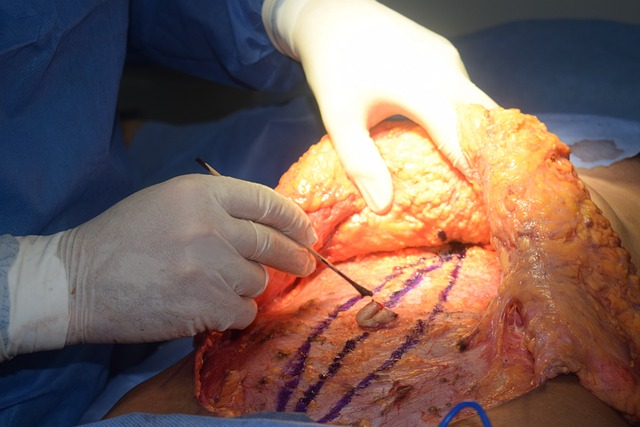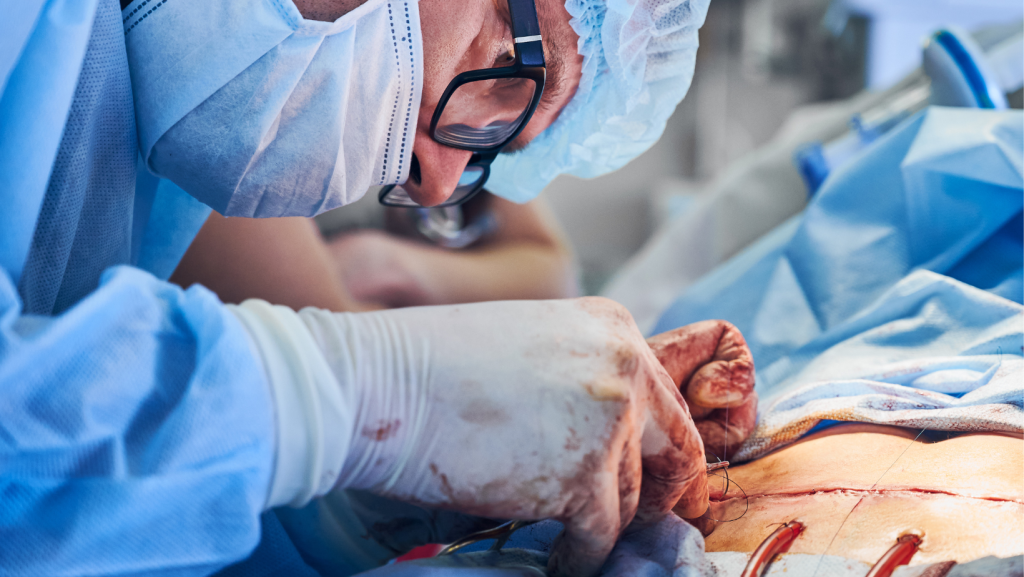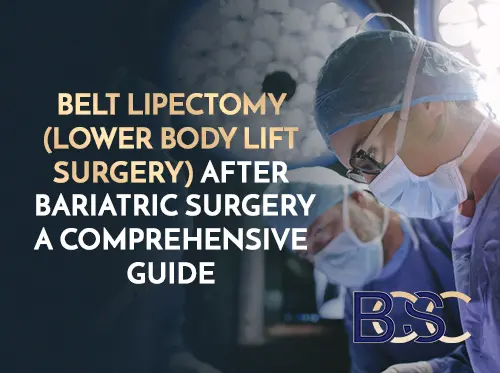Is An Abdominoplasty Major Surgery?
While there is no official classification as to whether abdominoplasty is considered major surgery, most surgeons agree that any elective surgery in the abdominal area to remove excess fat, skin, and underlying tissue, involving general anaesthesia, is not a minor surgical procedure.
Reasons An Abdominoplasty is Considered Major Surgery
- Complexity of the procedure
- Surgical site
- Use of general anaesthesia
- Overnight stay in hospital
- Several weeks of recovery time involved
- alterns anatomical structure of abdominal region
- Risks involved
Though abdominoplasty involves the removal of excess skin and fat following significant weight loss and the tightening of loose muscles for cosmetic reasons, it is not an instant beauty fix. It is, rather, a major surgical procedure that can alter one’s physique, especially in the abdominal region.
As such, it comes with all the considerations and potential complications inherent to any significant operation including the loss of skin sensation, infection in the incision site, excess blood loss, hypertrophic scars, structural defects, adverse reaction to general anesthesia, separated muscles, and deep vein thrombosis.

Major Surgery
What Is Considered Major Surgery?
Major surgery is commonly referred to as an operation that involves critical body organs, such as the head, chest, or abdominal wall. These surgeries tend to include sensitive medical interventions such as organ transplants, extraction of brain tumours, cesarean sections, kidney surgeries, and open-heart procedures. Surgeons perform major surgeries when the patient’s life is threatened or after catastrophic injuries.
Whether or not a procedure is considered major surgery is also determined by the operation’s recovery period. After undergoing extensive surgeries, patients require time for the body to heal. In many instances, proper healing can take several weeks, months, or even years before patients can fully resume daily activities.
What Is Considered Minor Surgery?
Minor surgery is generally one that is less invasive, involving tissues near the skin’s surface. Some examples of minor surgical procedures include laparoscopic and arthroscopic surgery. The main characteristic of minor surgery includes the use of smaller incisions, resulting in less tissue trauma.
The recovery time following a minor surgery is most often less than that of a major surgical procedure. Minor surgeries are characterised by recovery times and fewer risks involved. It is common for patients to return home after same day surgery. Less recovery time means less time needed before resuming normal activities.
Why Abdominoplasty Is Considered Major Surgery
An abdominoplasty tends to qualify as a major surgical procedure because of its invasive nature, the potential for increased risk, the use of drainage tubes, an extended anaesthesia duration, and a longer healing process and recovery period.
Three Types of Abdominoplasty Surgery
There are three main types of abdominoplasty surgery: Full Abdominoplasty, Fleur de lis Abdominoplasty and Mini Abdominoplasty. These options vary depending on the amount of excess fat and skin to be removed, one’s physical health, and a patient’s recovery timeline, tolerance for pain, and budgetary constraints.
Factors Used to Determine Which Type of Abdominoplasty Best Suits a Patient
Other factors considered are the patient’s complete medical history including anatomical structural changes from previous surgeries, the possibility of future pregnancies, and the state of the patient’s abdominal muscles. Dr. Beldholm will assess which one of these procedures will deliver the best results using these and other determining factors.

Disclaimer: Operation performed by Dr Bernard Beldholm. Adult content, surgery has risks; individual results vary, seek 2nd opinion. Please see the full disclaimer.
Full Abdominoplasty Surgery
A full abdominoplasty is a major surgery. In fact, it is likely one of the most significant surgeries one can have in their lifetime. Involving the removal of excess fatty tissue and lifting of the skin on the lower body, a Full Abdominoplasty Surgery requires general anaesthesia.
Full Abdominoplasty Surgery lasts between 3 and 5 hours and patients should expect to stay in the hospital for at least one night.
Full Abdominoplasty Surgery carries more risks, requires more downtime, and involves a longer recovery than a mini abdominoplasty. Full Abdominoplasty Surgery recovery can last anywhere from several months to a few years.
Potential Risks Involved in Full Abdominoplasty Surgery
- Hypertrophic scars
- Prominent scars
- Adverse reaction to general anaesthesia
- Wound infection
- Fluid accumulation
- Excessive Bleeding
- Deep vein thrombosis

Disclaimer: Operation performed by Dr Bernard Beldholm. Adult content, surgery has risks; individual results vary, seek 2nd opinion. Please see the full disclaimer.
Fleur de Lis Abdominoplasty
Fleur de lis Abdominoplasty is more invasive than a Full Abdominoplasty and is considered a major surgery. The procedure includes a vertical incision as well as the lower abdominal incision. General anaesthesia is required during this operation, which lasts between 3 and 5 hours. The patient must spend the night in the hospital after the procedure.
Because Fleur de lis Abdominoplasty Surgery alters the patient’s anatomical structure and abdominal shape, there is a potential for significant complications.
Potential Risks Involved in Extended Abdominoplasty Surgery
- Hypertrophic scars
- Prominent scars
- Adverse reaction to general anaesthesia
- Wound infection
- Fluid accumulation
- Excessive Bleeding
- Deep vein thrombosis
Patients should also expect longer recovery times with the fleur de lis Abdominoplasty Surgery than other abdominoplasty procedures because of the longer incision and extensive tucking involved.

Abdominoplasty, dermolipectomy, plastic surgery
Mini Abdominoplasty Surgery
A mini abdominoplasty is ideal for patients who require the removal of less loose skin below the belly button. Because it is less invasive than the other types of abdominoplasty surgery, it carries less risk and can be done as a day surgery, normally not requiring an overnight hospital stay. The incision required for a Mini Abdominoplasty Surgery is shorter and below the bikini line.
Mini Abdominoplasty Surgery involves trimming less excess skin on the lower abdomen.
Though general anaesthesia is still required for this operation, it is considered less risky than full and extended abdominoplasty surgery. As with any surgery, however, there are still potential risks involved.
Potential Risks Involved in Mini Abdominoplasty Surgery
- Hypertrophic scars
- Prominent scars
- Adverse reaction to general anaesthesia
- Wound infection
- Fluid accumulation
The recovery period of a mini abdominoplasty is less. Patients can expect to resume daily activities a few weeks after the procedure. However, patients must allow the abdominoplasty wound to heal completely before being involved in strenuous activities. Poor wound healing increases the risks of developing Abdominoplasty complications, such as blood clots.

The Bottom Line
According to Dr Bernard Beldholm, an abdominoplasty is a major surgery. Even though it doesn’t involve the removal of any internal organ, the surgery’s extensive nature, the risks involved and the fact that you’ll need to spend a day or two in the hospital make it fall under this category. There is a lot to consider before going in for an abdominoplasty. Therefore, consult with a FRACS surgeon before the surgery to learn more about the surgery as you explain your specialised needs.
References
- Newsome, K., McKenny, M., & Elkbuli, A. (2021). Major and minor surgery: Terms used for hundreds of years that have yet to be defined. Annals of Medicine and Surgery, 66.
- Solimeno, L. P., Escobar, M. A., Krassova, S., & Seremetis, S. (2017). Major and Minor Classifications for Surgery in People with Hemophilia: a literature review. Clinical and Applied Thrombosis-Hemostasis, 24(4), 549–559.
- Carlstedt, A., Bringman, S., Egberth, M., Emanuelsson, P., Olsson, A., Petersson, U., Pålstedt, J., Sandblom, G., Sjödahl, R., Stark, B., Strigård, K., Tall, J., & Theodorsson, E. (2020). Management of diastasis of the rectus abdominis muscles: recommendations for swedish national guidelines. Scandinavian Journal of Surgery, 110(3), 452–459.
- Birch DW, Goldsmith CH, Tandan V; Evidence-Based Surgery Working Group. Users’ guide to the surgical literature. Self-audit and practice appraisal for surgeons. Can J Surg. 2005 Feb;48(1):57-62. PMID: 15757040; PMCID: PMC3211577.
- Hafezi, F., & Nouhi, A. H. (2006b). Safe abdominoplasty with extensive liposuctioning. Annals of Plastic Surgery, 57(2), 149–153.
- Bartow, M. J. (2023, February 14). Liposuction. StatPearls – NCBI Bookshelf. NBK563135
- O’Kelly, N., Nguyen, K. T., Gibstein, A., Bradley, J. P., Tanna, N., & Matarasso, A. (2020). Standards and Trends in Lipoabdominoplasty. Plastic and Reconstructive Surgery. Global Open, 8(10), e3144.
- Saldanha, O. R., Ordenes, A. I., Goyeneche, C., Cánchica, A. F., Filho, O. S., Saldanha, C. B., Menegazzo, M. R., & Cação, E. G. (2020b). Lipoabdominoplasty with Anatomical Definition. Plastic and Reconstructive Surgery, 146(4), 766–777.
- Borille, G., Filho, G. P., Zancanaro, M., Giannini, R., Reynosso, L., Avalos, V., & Nahas, F. X. (2022). Medium definition liposuction abdominoplasty. Plastic and Reconstructive Surgery. Global Open, 10(5), e4053.
- Nahabedian, M. Y. (2018). Management Strategies for Diastasis Recti. Seminars in Plastic Surgery, 32(03), 147–154.
- E, N., Mwobobia, I. K., & Muniu, E. (2004). Major and minor surgery output at district level in Kenya: review and issues in need of further research. African Journal of Health Sciences, 9(1). https://doi.org/10.4314/ajhs.v9i1.30752
- Earl, R. O., & Pilcher, L. S. (1917). Definition of major and minor surgery. Annals of Surgery, 65(6), 799.


